Verbena flowers with a long flowering period can become an ornament to flowerbeds of even inexperienced gardeners, due to their unpretentiousness. In the wild, the genus has more than 250 species, among which stands out medicinal verbena, combining aesthetic beauty with medicinal qualities.
Material Content:
Plant description
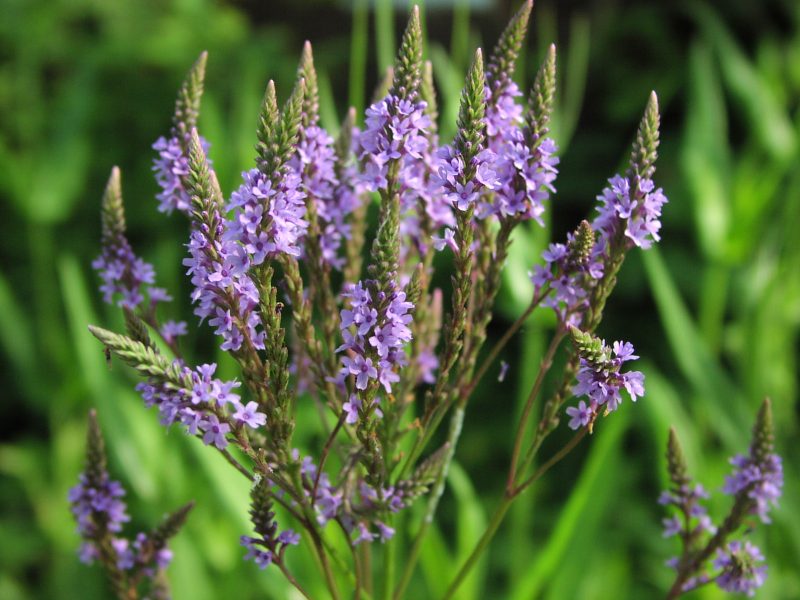
The species is represented by herbaceous plants with erect shoots with a height of 30 to 60 cm. The stems are tetrahedral in shape with villi branching in the upper part. Small leaves are attached to the shoots with the help of short petioles. Axillary inflorescences in the form of a brush-shaped panicle consist of small flowers of various colors. Flowering is observed in the first half of summer. At the end of the summer season and the beginning of autumn, verbena officinalis bears fruit. Wild plants with a powerful root system in their natural habitat are perennial. However, due to poor frost resistance, representatives of the flora in cultivated climates in flower beds are cultivated as annuals.
Growing verbena from seeds at home
At home, verbena officinalis is grown by the seedling method, in which:
- In late February, the disinfected container for seedlings is filled with a substrate of peat and sand.
- The soil mixture is pre-punctured to destroy pathogens and larvae of pests in the oven.
- Small seeds are distributed over the soil surface and slightly pressed, after which the box is covered with a film.
- After the emergence of seedlings, the film is removed, and the container is exposed on a bright windowsill, where the crops are systematically moistened with a spray bottle.
- After the seedlings form 2 pairs of true leaves, the seedlings dive into separate containers.
- When the seedlings reach a height of 8-10 cm, they are pinched for better branching.
Planting a plant in a permanent place
For open ground, pre-hardened seedlings are used. At the end of spring, when the threat of spring frost is finally over, you can begin to plant verbena. In a sunny area with fertile, loose soil, holes are made, at the bottom of which a drainage layer is placed. The distance between the recesses is maintained within 25 cm.
Advice! If the site has heavy soils, then before planting for digging, peat and sand should be added.
Outdoor cultivation and care
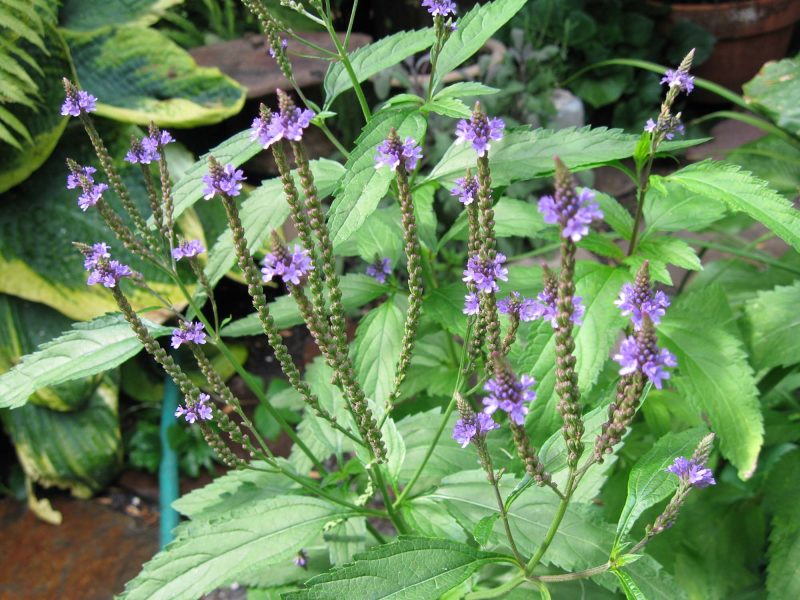
To grow healthy and plentifully flowering plants, you don’t have to make special efforts. It is enough to systematically carry out several simple care activities.
Watering mode
Verbena needs additional watering during a period of active growth and flowering. After the completion of the phase, the frequency and volume of humidification are reduced.
Loosening, weeding and mulching

In the case of single landings, weeding will have to be carried out systematically. If verbena officinalis is used in group plantings, then thanks to the rapid increase in root mass, the need to combat weeds disappears quite quickly. Loosening, allowing to provide the necessary level of aeration, is carried out several times a season. To save time and protect the near-stem circle from excessively rapid evaporation of moisture, the soil under the bushes can be mulched with sawdust or peat.
Fertilizing and fertilizers
In order for the plant to develop well and flourish abundantly, it is worthwhile to feed the verbena with medicinal complex mineral fertilizers, which include phosphorus and potassium. Organics are applied under the bushes no more than 1 time per season, since nitrogen in an accessible form can cause intensive growth of green mass to the detriment of budding and prolonged flowering.
Pruning
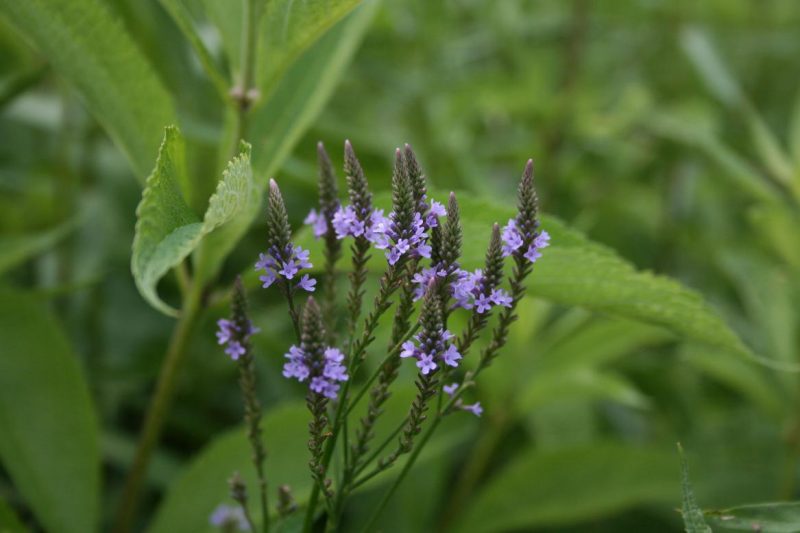
If the florist wants to prolong the flowering phase, then he should promptly remove the faded inflorescences that consume the life force of the verbena.
How to propagate a plant
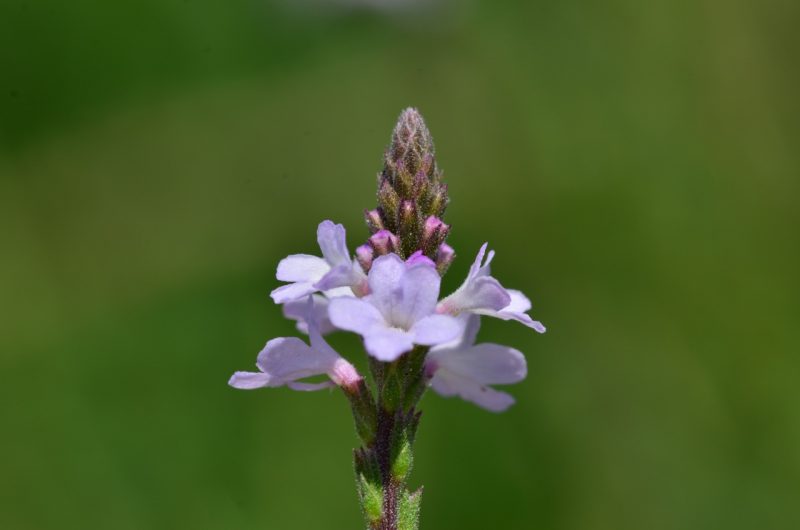
In addition to the seed method through seedlings, medicinal verbena can be propagated by cuttings, in which:
- In the autumn, with a significant earthen lump, a verbena bush is dug up and sent for the winter to a cool place - the basement.
- With the advent of spring, the upper parts of shoots with 4 internodes are cut to obtain cuttings.
- All leaves, except the apical pair, are removed.
- Prepared cuttings are buried in sand by 1-2 cm so that 1 kidney is in the ground.
- Landings are covered with a film so that the sand remains constantly moistened.
- After 3 weeks, when shoots begin to appear, the film or other protective material is removed.
Important! Rooted cuttings are planted in open ground at the same time as seedlings obtained from seeds.
Diseases and pests of medicinal verbena
Verbena is practically not affected by harmful organisms.
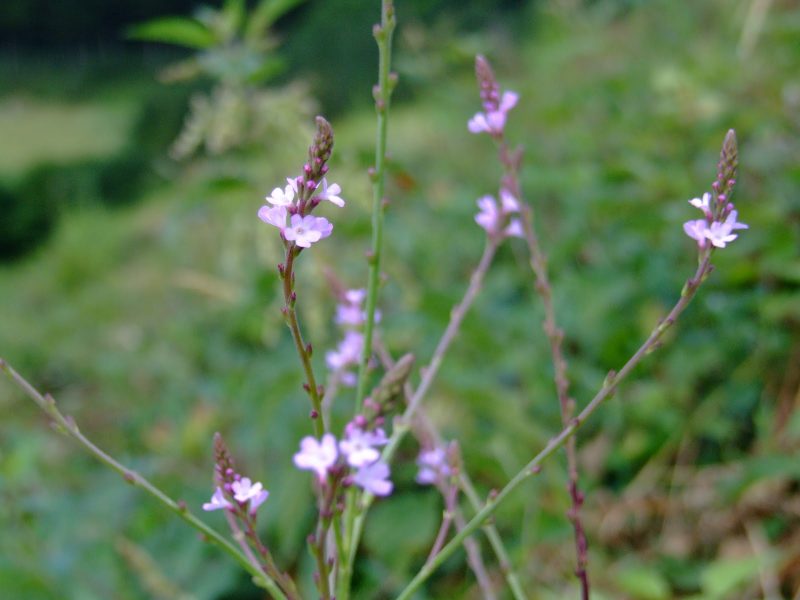
However, in case of violation of agricultural cultivation techniques and adverse weather conditions, manifestations of the following diseases and pests can be noted:
- Gray rot - in rainy weather and systematic bays of the soil, the development of a fungal disease can begin, which can be stopped by spraying the plantings with fungicides.
- Aphids - severe air drought can cause a strong population of medicinal verbena bushes by a sucking pest.At the first signs of the vital activity of an insect on the shoots, the plants should be treated with a systemic insecticide according to the manufacturer's instructions indicated on the package.
Seed collection and storage
The method of obtaining seed depends on the structure of inflorescences and himself.

To collect verbena seeds and save them until sowing, you need to learn some subtleties:
- After flowering, seed capsules are formed on the verbena, which can be carefully removed after they have acquired a brown color.
- Seeds are retained from the dried capsules to maintain germination from 3 to 5 years.
- The seed is placed in tissue bags for storage, which is carried out in a dry, dark place.
The use of verbena officinalis
In addition to flower arrangements in which medicinal verbena looks spectacular due to its long flowering and a diverse palette of colors, the herb is widely used in folk medicine. The medicinal qualities of the astringent taste of the plant help in the treatment of headaches, colds, diseases of the liver and spleen, and gastric colic. To cope with various gastric ailments in the form of gastritis, cholecystitis, you can use the infusion twice a day in a volume of 100 ml. To prepare the tincture, it is enough to pour 15 g of dry grass with 250 ml of boiling water, and after 20 minutes, strain.
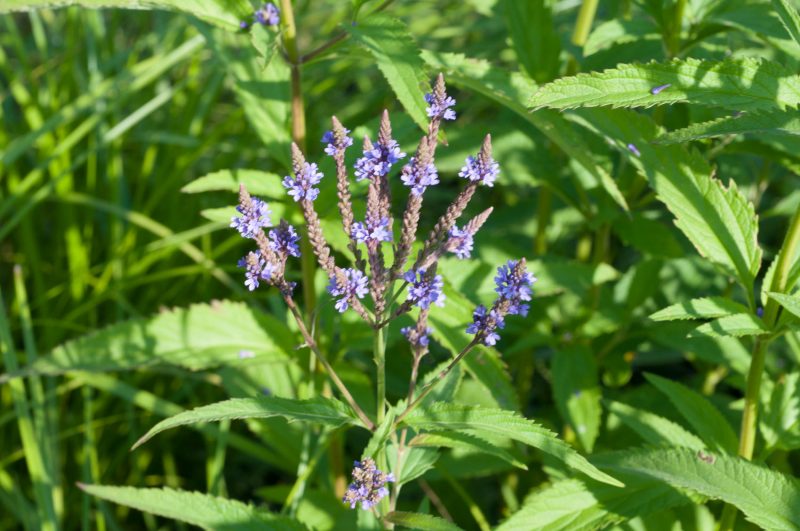
Verbena-based preparations are also used to clean and strengthen the walls of veins, arteries, restore vascular tone and injured capillaries, reduce blood viscosity, increase the elasticity of the vascular system, strengthen the immune system and lower cholesterol.
Thus, the cultivation of medicinal verbena on the site will not only decorate the garden, but also become the owner of the healing herb used in the treatment of various diseases and disorders.












